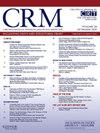Impact of pulmonary artery catheterization in patients with acute myocardial infarction cardiogenic shock
IF 1.9
Q3 CARDIAC & CARDIOVASCULAR SYSTEMS
引用次数: 0
Abstract
Acute myocardial infarction (AMI) remains one of the most common causes for cardiogenic shock (CS), with high inpatient mortality (40–50 %). Studies have reported the use of pulmonary artery catheters (PACs) in decompensated heart failure, but contemporary data on their use to guide management of AMI-CS and in different SCAI stages of CS are lacking. We investigated the association of PACs and clinical outcomes in AMI-CS. In this retrospective study from a large healthcare system (MedStar Health, 10 hospitals) from 2014 to 2021, patients were grouped according to presentation as ST-elevation myocardial infarction (STEMI) or non-STEMI (NSTEMI) and on the basis of SCAI classification. In-hospital mortality was assessed among patients with and without PACs using propensity-matched analysis. A total of 2585 patients were included, of whom 797 had STEMI and 1788 had NSTEMI. Overall, 517 patients underwent PAC placement; PAC utilization rates were 19.7 % in the STEMI group and 20.4 % in the NSTEMI group. Overall, among patients with AMI-CS, we observed that in-hospital mortality was higher in patients who did not receive PACs during hospitalization (35.9 % vs 25.9 %, p < 0.001). After propensity-matching 484 patients in the PAC group to 484 in the no-PAC group, the no-PAC group still showed higher mortality (34.9 % vs 26.7 %, p = 0.005). Utilization of MCS devices was higher in patients with PAC. In conclusion, our results suggest an advantage in utilizing PACs in AMI-CS patients to identify early CS stages and offer appropriate therapies. Therefore, PACs should be routinely used in for this population.
肺动脉置管对急性心肌梗死心源性休克的影响。
急性心肌梗死(AMI)仍然是心源性休克(CS)最常见的原因之一,住院死亡率高(40- 50%)。研究报道了在失代偿性心力衰竭中使用肺动脉导管(PACs),但缺乏其用于指导AMI-CS管理和CS的不同SCAI阶段的当代数据。我们研究了PACs与AMI-CS临床结局的关系。在这项来自大型医疗保健系统(MedStar Health, 10家医院)2014年至2021年的回顾性研究中,根据st段抬高型心肌梗死(STEMI)或非STEMI (NSTEMI)的表现以及SCAI分类对患者进行分组。采用倾向匹配分析评估有PACs和无PACs患者的住院死亡率。共纳入2585例患者,其中STEMI患者797例,NSTEMI患者1788例。总体而言,517例患者接受了PAC植入;STEMI组PAC使用率为19.7%,NSTEMI组为20.4%。总体而言,在AMI-CS患者中,我们观察到住院期间未接受PACs治疗的患者的住院死亡率更高(35.9% vs 25.9%, p
本文章由计算机程序翻译,如有差异,请以英文原文为准。
求助全文
约1分钟内获得全文
求助全文
来源期刊

Cardiovascular Revascularization Medicine
CARDIAC & CARDIOVASCULAR SYSTEMS-
CiteScore
3.30
自引率
5.90%
发文量
687
审稿时长
36 days
期刊介绍:
Cardiovascular Revascularization Medicine (CRM) is an international and multidisciplinary journal that publishes original laboratory and clinical investigations related to revascularization therapies in cardiovascular medicine. Cardiovascular Revascularization Medicine publishes articles related to preclinical work and molecular interventions, including angiogenesis, cell therapy, pharmacological interventions, restenosis management, and prevention, including experiments conducted in human subjects, in laboratory animals, and in vitro. Specific areas of interest include percutaneous angioplasty in coronary and peripheral arteries, intervention in structural heart disease, cardiovascular surgery, etc.
 求助内容:
求助内容: 应助结果提醒方式:
应助结果提醒方式:


